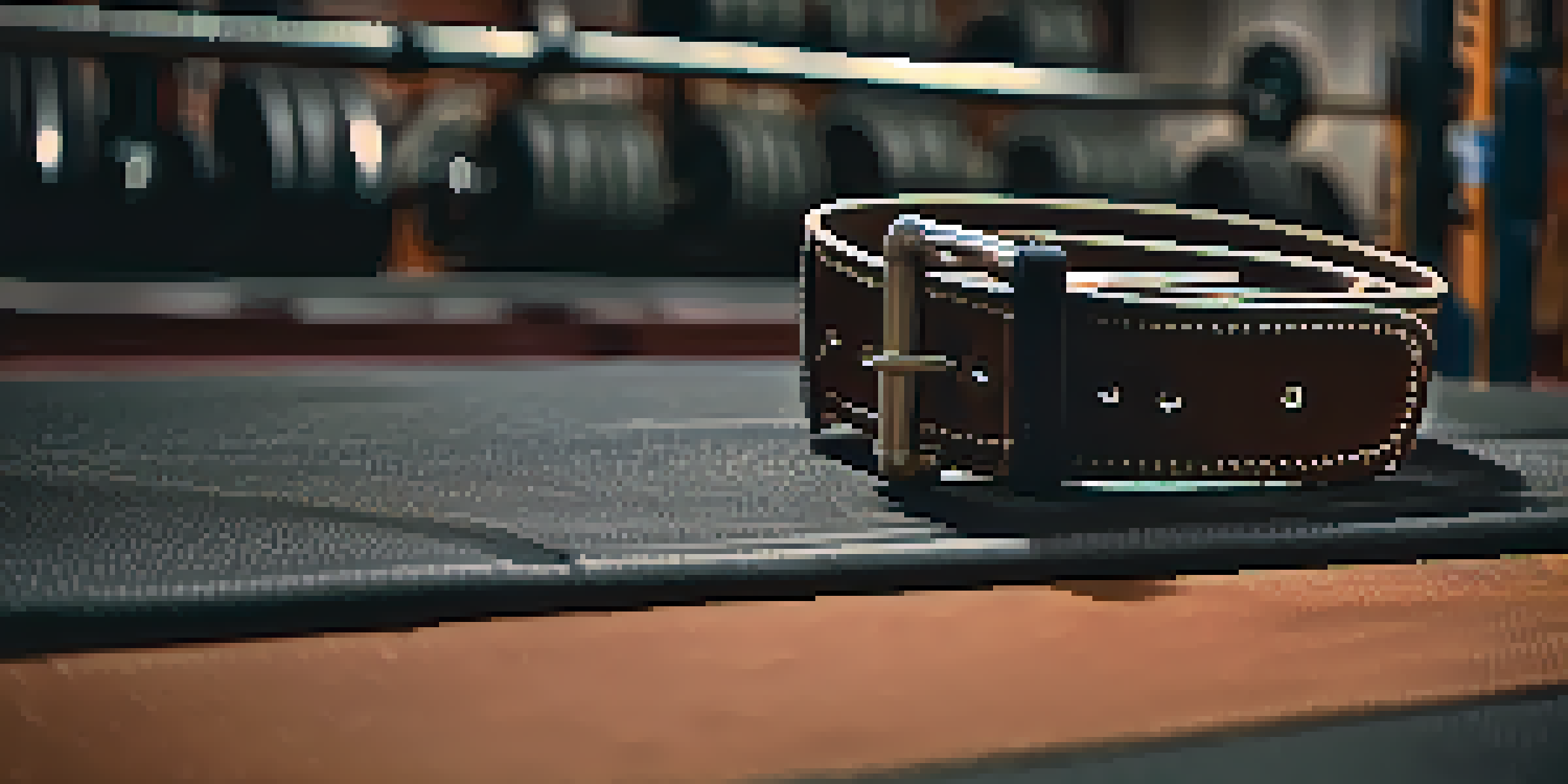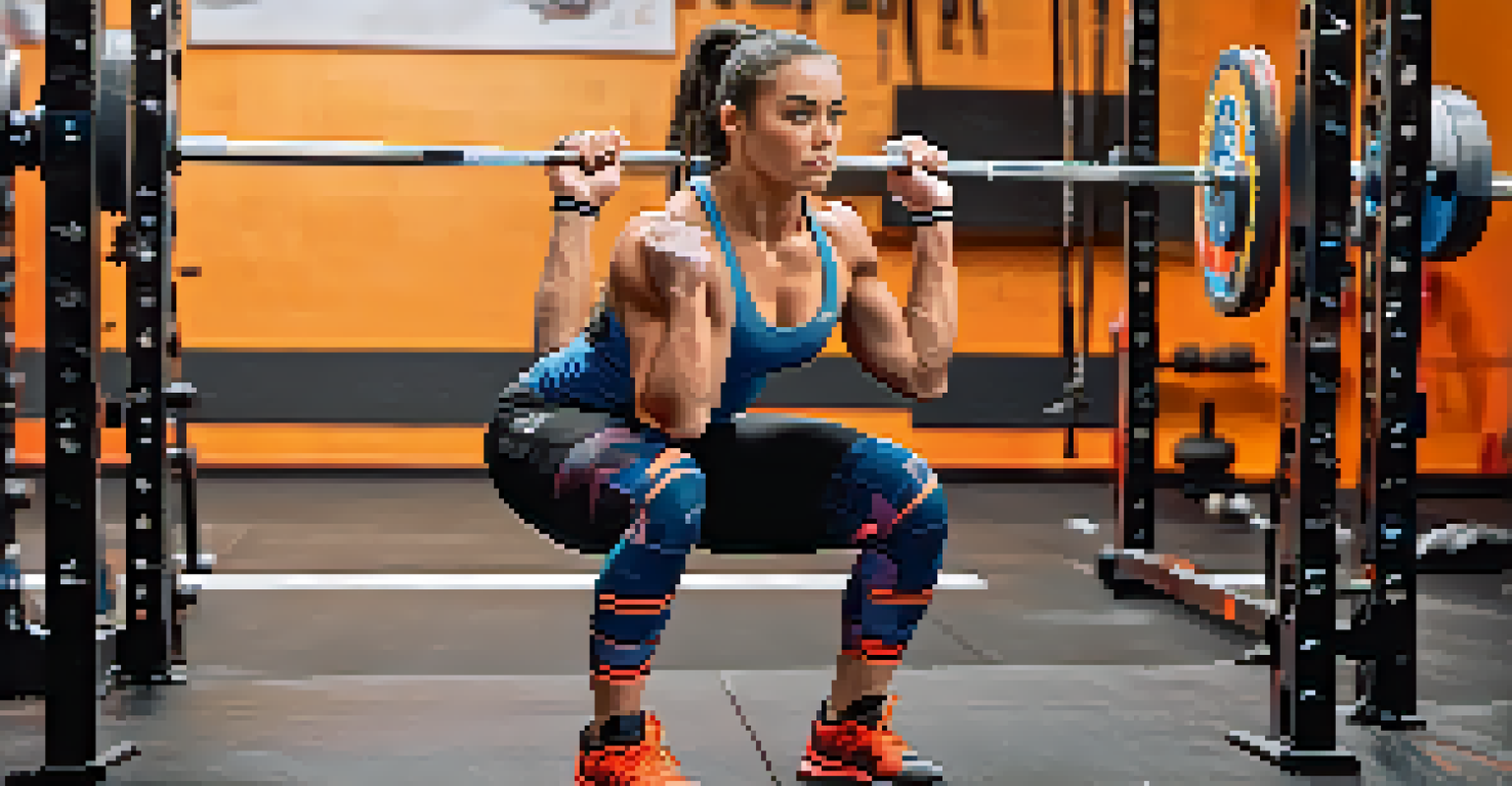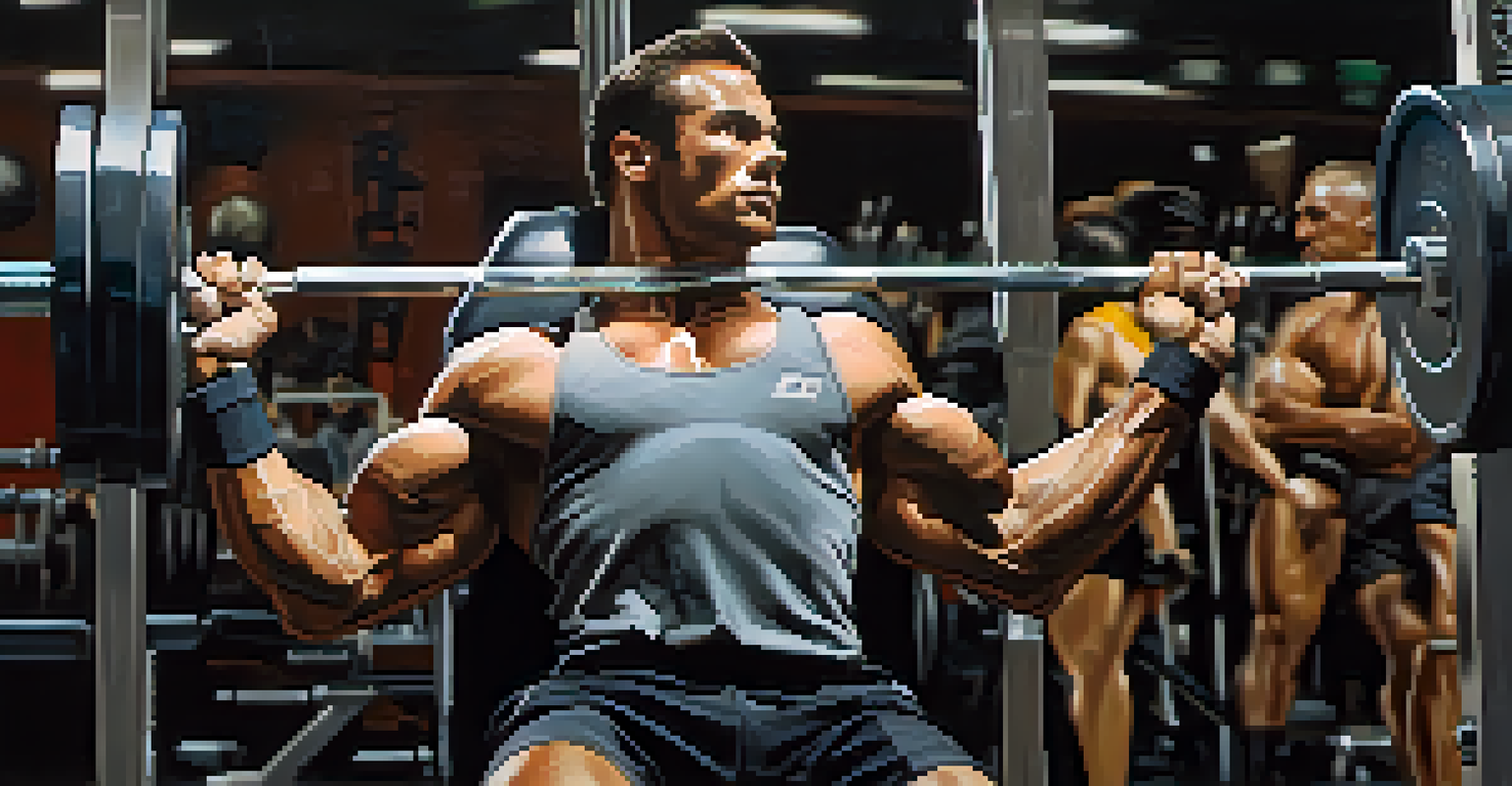Powerlifting Gear: How to Use Equipment for Maximum Benefit

Understanding Powerlifting Gear: What You Need to Know
Powerlifting gear encompasses a variety of equipment designed to enhance your performance in the three main lifts: squat, bench press, and deadlift. Essential items include lifting belts, knee sleeves, wrist wraps, and specialized shoes. Each piece of gear serves a distinct purpose, aiming to provide support, stability, and safety during heavy lifts.
The only bad workout is the one that didn't happen.
For instance, a lifting belt helps to stabilize your core and lower back, allowing you to lift heavier weights with reduced risk of injury. On the other hand, knee sleeves provide warmth and compression, which can be beneficial for joint support during squats. Understanding these tools can significantly impact your lifting experience and results.
As you explore the world of powerlifting gear, remember that it's not just about having the latest equipment. It's crucial to choose gear that fits well and complements your lifting style. The right gear can make a noticeable difference in your performance and overall enjoyment of the sport.
Choosing the Right Lifting Belt for Your Needs
A lifting belt is a fundamental piece of equipment for powerlifters, but choosing the right one can be daunting. Look for a belt that is the right width and thickness for your body type and lifting habits. Generally, a width of 4 inches is standard, providing ample support without hindering your movement.

When it comes to material, leather belts are popular for their durability and support, while nylon options offer flexibility and comfort. It's also essential to consider the buckle type, as a single prong or lever buckle can affect how quickly you can secure the belt during workouts. Test different belts if possible to find the one that feels best for you.
Essential Gear for Powerlifting
Powerlifting gear, like lifting belts and knee sleeves, enhances performance by providing support and stability during heavy lifts.
Ultimately, the right lifting belt should feel snug but comfortable, allowing you to brace your core effectively. Remember, the belt is there to assist you, not to take the place of proper lifting technique. With the right belt, you'll likely find an increase in your lifting capacity over time.
Knee Sleeves: How They Enhance Your Squats
Knee sleeves are a popular choice among powerlifters, providing both warmth and compression to support the knee joint during lifts. They can help reduce pain and discomfort, particularly for those with a history of knee issues. When you put on a good pair of knee sleeves, it feels like a gentle hug around your knees, which can enhance your confidence while lifting.
Strength does not come from physical capacity. It comes from an indomitable will.
When selecting knee sleeves, look for the right size and thickness that suits your needs. Thicker sleeves (7mm) offer more support but can be restrictive, while thinner options (5mm) provide flexibility for those who prefer a more natural feel. Make sure to try them on and move around a bit to ensure they don't restrict your mobility.
Using knee sleeves during squats can lead to better performance by allowing you to push through heavier weights with less strain on your joints. They can also provide a psychological boost, giving you the added confidence to tackle challenging lifts. Just remember, while knee sleeves are advantageous, they should complement, not replace, proper squat technique.
Wrist Wraps: Boosting Your Bench Press Stability
Wrist wraps are often overlooked, but they can play a pivotal role in enhancing your bench press performance. By providing stability and support to your wrists, these wraps can help prevent strain and ensure that your focus remains on lifting heavy. Think of them as a safety net for your wrists, allowing you to push your limits more confidently.
When selecting wrist wraps, consider the length and stiffness. Longer wraps offer more support but may take longer to wrap correctly, while shorter wraps are quicker to secure but might not provide as much stability. It's essential to find a balance that works for your lifting style and comfort.
Proper Equipment Maintenance
Regular cleaning and addressing wear and tear on your powerlifting gear can prolong its lifespan and improve your lifting experience.
Incorporating wrist wraps into your bench press routine can lead to significant improvements in your performance, especially when lifting heavier weights. Just like knee sleeves for squats, wrist wraps can serve as a mental boost, allowing you to focus on executing your lifts with precision and power.
Investing in Powerlifting Shoes for Better Performance
Powerlifting shoes are specifically designed to provide a solid base for lifting, enhancing your performance during squats, bench presses, and deadlifts. They often feature a raised heel, which can help improve your squat depth and overall lifting posture. Imagine stepping into a pair of powerlifting shoes as putting on armor before a battle—they prepare you to tackle your toughest lifts.
When choosing powerlifting shoes, look for a pair that fits snugly and offers a solid, non-slip sole for maximum grip. Options vary widely, from shoes with a higher heel for squats to flatter designs that work well for deadlifts. It's important to consider your lifting style and the type of lifts you perform most frequently.
While investing in a quality pair of powerlifting shoes may seem like a splurge, the difference they can make in your performance is often well worth it. You'll likely notice improved stability and power transfer during your lifts, helping you reach new personal bests more effectively.
Understanding the Role of Specialty Equipment
Specialty equipment, such as deadlift suits and bench shirts, can provide significant assistance during competition lifts. These items are made from unique materials that offer support and increase your lifting capacity. Think of them as extra layers of strength that help you push beyond your limits when it counts most.
However, using specialty equipment requires proper training and familiarization. It’s crucial to learn how to use this gear effectively to maximize its benefits while minimizing the risk of injury. Many lifters dedicate time to practice in their suits or shirts before competition day to ensure they know how to handle the added support.
Mental Confidence Boost
Using the right powerlifting gear not only offers physical benefits but also boosts your mental confidence, preparing you for challenging lifts.
Incorporating specialty equipment into your training can lead to impressive improvements in your strength and technique, especially during competitions. Just remember that mastery of your form should always come first; use these tools to enhance, not replace, your hard-earned skills.
Maintaining Your Powerlifting Gear for Longevity
Taking care of your powerlifting gear is essential for ensuring its longevity and effectiveness. Regular cleaning and proper storage can go a long way in maintaining the quality of your equipment. For instance, remember to wipe down your lifting belt and shoes after each use to prevent wear and tear.
Additionally, pay attention to any signs of damage or wear, such as fraying straps on wrist wraps or cracks in your lifting belt. Addressing these issues early can save you from potential injuries and costly replacements down the line. It’s always better to be proactive about gear maintenance than reactive.

Incorporating a simple maintenance routine into your training schedule will not only prolong the life of your gear but also enhance your overall lifting experience. By keeping your equipment in top condition, you can focus on improving your performance without worrying about gear failures or discomfort.
The Mental Edge: Gear as a Confidence Booster
While the physical benefits of powerlifting gear are undeniable, the mental aspect is equally important. Wearing the right equipment can boost your confidence, helping you approach heavy lifts with a positive mindset. It's like putting on your favorite jersey before a big game—it makes you feel ready to take on the challenge.
Many lifters find that the ritual of putting on their gear helps them mentally prepare for their workouts. This routine can serve as a signal to your brain that it’s time to focus and give your best effort. The psychological advantage of feeling secure and supported cannot be underestimated in a sport that often tests your limits.
So, as you invest in powerlifting gear, remember that it's not just about physical support. Embrace the mental edge that comes with the right equipment, allowing it to propel you toward your goals. With the combination of physical and psychological support, you're setting yourself up for success in the world of powerlifting.